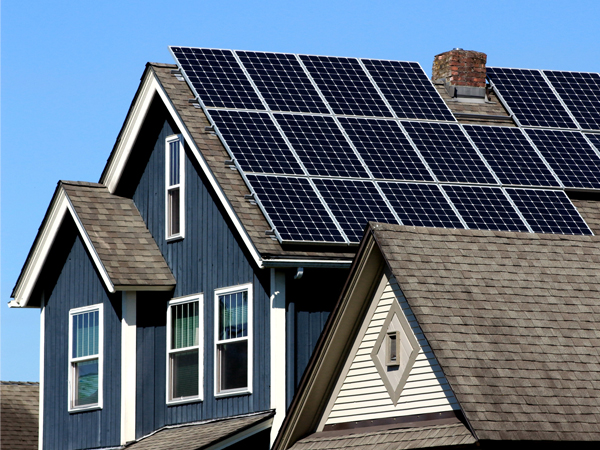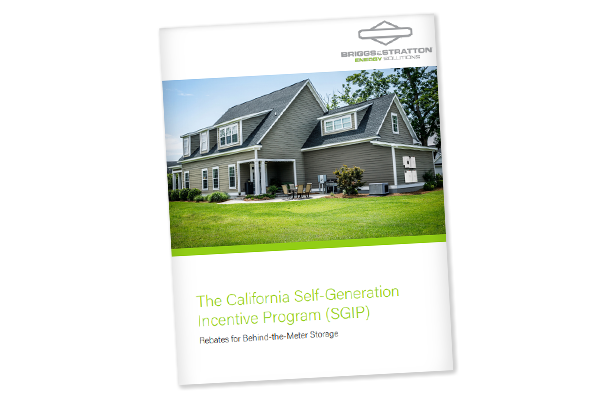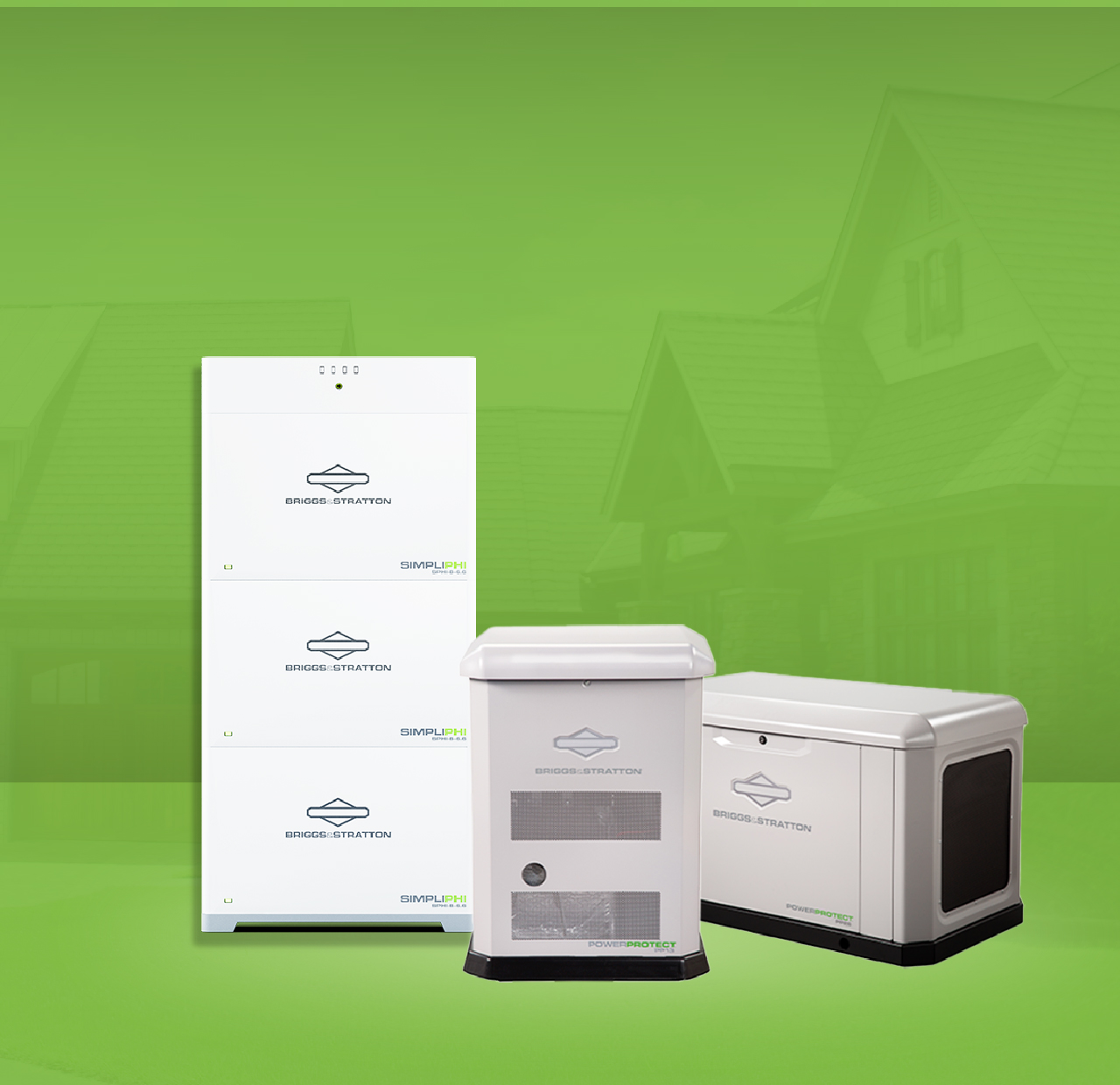

Rebates & Incentives
Lower monthly utility bills and create critical backup power.
With numerous rebates and incentives currently accessible for adopting battery storage, now is the best time to invest in an energy storage system. The extension of federal tax credits under the Inflation Reduction Act, along with a variety of state and local benefits, underscores the importance of understanding your local incentives and the time frames needed to take action. Explore the incentives available to you here to make the most informed decision.
Briggs & Stratton Energy Solutions is recognized by the California Public Utilities Commission as a California Manufacturer of energy storage systems (ESS). As such, California residential and commercial customers can now take advantage of an additional 20% SGIP incentive on the cost of their Briggs & Stratton ESS systems. Depending on the type and size of ESS, that could mean that most or all ESS equipment expenses may be covered by California’s SGIP program.
Hundreds of state and local incentives are currently available across the country. These incentives can be added on top of your federal tax credit to significantly offset the initial investment and make transitioning to battery storage more affordable.
Discovering what incentives are available in your area is becoming easier. Click on your state in the list below to find rebates and incentives specific to your state. Each state is linked to the Database of State Incentives for Renewables & Efficiency (DSIRE), a comprehensive resource that tracks various programs offered at the state and local levels.
Briggs & Stratton Energy Solutions continues to grow its partnerships with state, local and utility programs. Here’s a list of current programs:
The California Self-Generation Incentive Program (SGIP) encourages storage deployments in California. Initiated by the California Public Utilities Commission (CPUC), SGIP offers incentives to alleviate consumers’ financial burden of storage. By increasing California’s distributed storage, SGIP incentives were created to help reduce strain on the grid and support those vulnerable to power outages.
California’s Self-Generation Incentive Program (SGIP) has introduced an additional $675 million in funding to support broad adoption of battery storage to 1) create critical customer-sited back-up power and 2) reduce rising levels of CO2 and other GHG emissions behind climate change. As rising heat, drought and severe winds continue to increase the risk of fires and planned Public Safety Power Shutoffs (PSPS), the SGIP program has dedicated 80% of available funding to help cover the cost of new and retrofit battery storage systems.
Our battery storage and management systems create safe and reliable access to power 24/7 for your home and business.
Depending on location and size of project, available rebates can cover from 85% to almost 100% of the installation. To learn more about the SGIP program and qualifying criteria, read our blog and download our quick-view fact sheet!

Briggs & Stratton is an approved “California Manufacturer” under SGIP and this allows an additional 20% discount on approved products such as:
*Qualifies for 20% additional SGIP incentive
**Qualifies for IRS US Content subsidy
SGIP's financial allocation is methodically structured, with a division by developer and a cap set at 20% of each step's budget. Once 50% of the available budget is allocated, the remaining portion is reserved for residential customers affected by power shutoff events or in High Fire Threat Districts (HFTD). This can include increased incentives if your home relies on electric pump wells for water. for pumped water in low income communities

1. Your Briggs & Stratton Certified Installer initiates SGIP initial paperwork to reserve a portion of funding.
2. Then installation, commissioning, utility approval, and submission of final paperwork to SGIP administrators is completed.
3. An SGIP administrator conducts a system inspection to confirm operational integrity.
4. Cash rebate is disbursed upon final application approval.
Want to learn more about incentives and rebates in your area? Click here or talk to one of our Certified Installers.
Briggs & Stratton SimpliPHI energy storage systems (ESS) with Sol-Ark inverters now qualify for incentives under the Energy Storage Solutions program from the CT Green Bank Program. Available incentives include both upfront and performance-based incentives for your SimpliPHI ESS.
Check out their website for more information on how incentives work:
https://energystoragect.com/
View a list of approved equipment:
https://energystoragect.com/submitted_ess_system_status_list/
Local governments and agencies who are tax exempt can also take advantage of clean energy tax credits through direct pay credits, but these programs can be difficult to navigate. Launched in August of 2024 by Lawyers for Good Government, an interactive online tool called the Clean Energy Tax Navigator is designed to help local governments and other tax-exempt entities access the Inflation Reduction Act’s billions of dollars worth of direct-pay tax credits. The free-to-use navigator can help eligible organizations determine if a clean energy project is eligible for the tax credits and figure out how to maximize their return.
Residents who have installed a SimpliPHI 6.6 Battery System may be eligible to claim a “Residential Clean Energy Credit”. Click the button below to learn more about eligibility and the filing process.
On August 16, 2022, President Joe Biden signed the Inflation Reduction Act of 2022 into law.
This comprehensive piece of legislation includes large investments in the renewable energy industry as well as domestic energy production and manufacturing. It also seeks to provide homeowners with energy cost savings while making it easier and less costly to incorporate clean energy and energy storage into their daily lives through tax credits and other financial incentives.
Need help determining if your project qualifies? Use this free online, interactive tool to determine if your project is eligible for tax credits through the Inflation Reduction Act. Click the button below to start learning about elective pay eligibility and requirements for your potential, planned, or completed project.
The Federal Investment Tax Credit (ITC), extended by the Inflation Reduction Act This credit offers a generous 30% tax credit on the expenses incurred for energy storage systems exceeding 3 kilowatt-hours (kWh) in capacity. It's important to note that this incentive extends to residential and commercial properties, providing a substantial financial advantage. Note: In order to take advantage of this credit, homeowners must act now! A new deadline has been set for December 31, 2025, after which the residential credit will expire.
1. Ownership - The taxpayer must be the rightful owner of the battery system.
2. Taxable Income - The taxpayer must have taxable income to be eligible for the credit.
3. Residence - The battery must be installed at the taxpayer's primary residence.
4. Original Installation - The credit can only be claimed for the system's initial installation; subsequent upgrades or replacements do not qualify.
5. Minimum Size - The battery must have a capacity of at least three kilowatt-hours (kWh) to be eligible for the credit.
6. NEW Deadline: Payment and installation must be completed by December 31, 2025 per the One Big Beautiful Bill Act of 2025.
To claim the federal tax credit for your energy storage system, you'll need to complete IRS Form 5695 when filing your taxes for the year in which the installation was completed. It's crucial to ensure accurate completion of this form to maximize your eligibility for the credit. Considering the complexity of tax regulations, consulting a tax expert is highly recommended to navigate the process effectively.
It's worth noting that taxpayers must have a tax liability to claim the Investment Tax Credit. If your tax liability doesn't match the credit amount, you can still benefit by spreading the credit over multiple years. However, it's important to understand that the credit can only offset taxes you would have owed otherwise.
While we strive to provide valuable information, it's essential to acknowledge that Briggs & Stratton Energy Solutions is not qualified to offer tax advice. For personalized guidance and detailed insights into how the federal clean energy tax credit could benefit you, we strongly encourage you to seek assistance from a certified tax professional. Their expertise will ensure you make informed decisions regarding your tax obligations and potential credits.
| For Systems Receiving Permission to Operate in | Briggs & Stratton SimpliPHI Batteries Federal Investment Tax Credit |
|---|---|
| 2023-2025 | 30% |
Want to learn more about incentives and rebates in your area?
Talk to One of Our Certified Installers


Complete the form below for a no-obligation estimate.